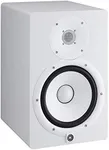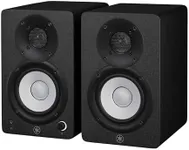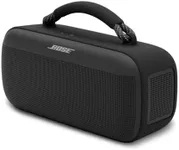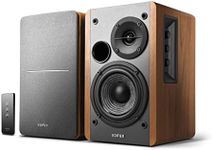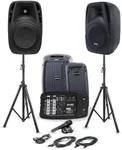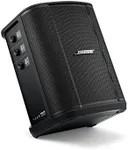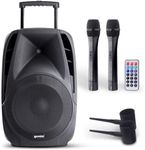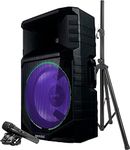Buying Guide for the Best Active Speakers
When choosing active speakers, it's important to consider several key specifications to ensure you get the best sound quality and performance for your needs. Active speakers have built-in amplifiers, which means they are convenient and easy to set up. However, the right choice depends on your specific requirements, such as the size of the room, the type of music or audio you listen to, and how you plan to use the speakers. Here are some key specs to consider and how to navigate them.Power Output (Wattage)Power output, measured in watts, indicates how much power the built-in amplifier can deliver to the speakers. This spec is important because it affects the volume and clarity of the sound. Lower wattage (20-50 watts) is suitable for small rooms or desktop setups, while higher wattage (50-200 watts or more) is better for larger rooms or outdoor use. Choose a power output that matches the size of your space and your listening habits.
Frequency ResponseFrequency response, measured in Hertz (Hz), indicates the range of frequencies the speakers can reproduce. A wider frequency range means the speakers can produce deeper bass and clearer highs. Typical ranges are 20Hz-20kHz, which covers the full spectrum of human hearing. If you enjoy bass-heavy music, look for speakers with a lower minimum frequency. For general listening, a standard range will suffice.
Driver SizeDrivers are the components that produce sound, and their size, measured in inches, affects the quality and type of sound. Larger drivers (6-8 inches) can produce more bass and are suitable for larger rooms or home theaters. Smaller drivers (3-5 inches) are better for midrange and treble frequencies and are ideal for desktop or small room setups. Choose driver size based on the type of audio you prefer and the size of your listening area.
Connectivity OptionsConnectivity options refer to the types of inputs and outputs available on the speakers. Common options include Bluetooth, RCA, XLR, and 3.5mm aux inputs. This spec is important because it determines how you can connect your audio sources. If you want wireless convenience, look for Bluetooth-enabled speakers. For professional setups, XLR inputs are preferred. Ensure the speakers have the necessary connections for your devices.
Cabinet Design and Build QualityThe design and build quality of the speaker cabinet can affect sound quality and durability. Well-built cabinets reduce unwanted vibrations and resonance, leading to clearer sound. Materials like wood or high-quality plastic are common. Consider the aesthetic and build quality, especially if the speakers will be a prominent part of your room. Choose a design that complements your space and ensures long-term durability.
Size and PortabilityThe size and portability of active speakers are important if you plan to move them frequently or have limited space. Larger speakers generally offer better sound quality but are less portable. Smaller, compact speakers are easier to move and fit into tight spaces but may sacrifice some audio performance. Consider how often you will move the speakers and the available space when making your choice.
